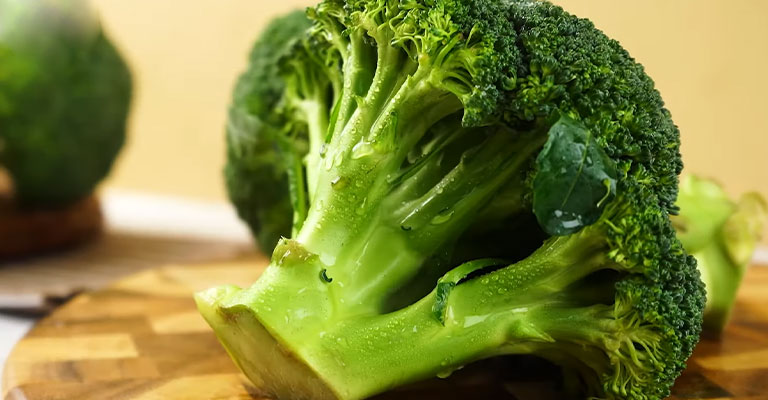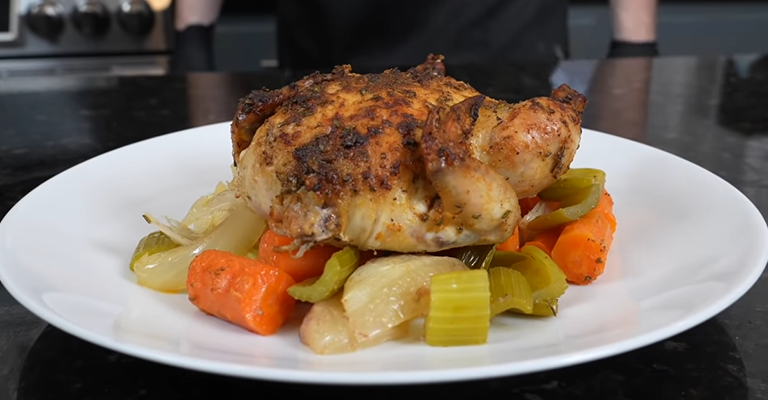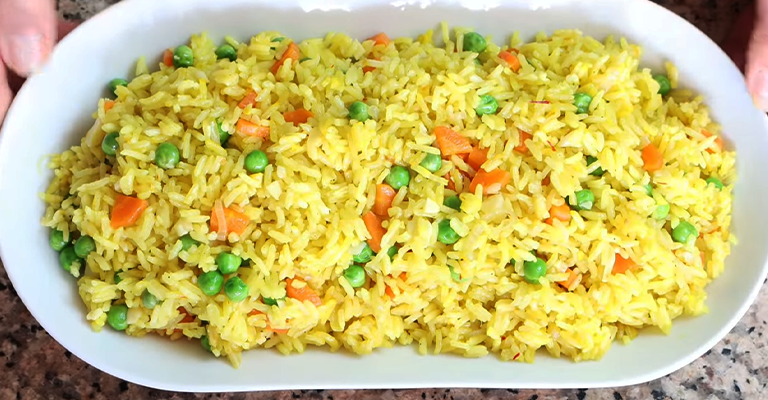Why Is My Jello Not Setting? -Explore the Actual Reasons
The allure of a perfectly set Jello, with its iconic wobble and smooth texture, is a culinary delight. Yet, there are moments when achieving that ideal consistency proves elusive.
Understanding the science behind Jello’s setting process is essential to troubleshooting this common kitchen conundrum. Factors like gelatin quantity, water temperature, and the choice of fruits play pivotal roles.
In this exploration, we delve into the reasons why Jello may not set as expected, offering insights and practical solutions to ensure your next gelatin creation emerges firm, flawless, and ready-to-delight taste buds.
Unraveling the mysteries of the Jello setting is the key to mastering this classic dessert.

Why Is My Jello Not Setting?
When your Jello isn’t set properly, it can be quite frustrating, but there are several common reasons for this issue. Jello, a brand name for flavored gelatin desserts, is known for its jiggly consistency when set correctly.
Here are some of the most common reasons why your Jello may not be setting as it should:
Insufficient Gelatin
Gelatin is the backbone of Jello, providing the structure that makes it firm and jiggly. If you use too little gelatin in your Jello mix, it won’t have enough binding power to set properly.
Follow the recommended gelatin-to-liquid ratio in your recipe. Generally, one packet of gelatin (about 2 1/4 teaspoons) can set up 2 cups of liquid, but this can vary by recipe and brand, so double-check.
Incorrect Temperature
Gelatin dissolves best in hot water, typically around 160°F (71°C). If the water is too cold, the gelatin may not fully dissolve, leading to clumps or grains in your Jello.
Conversely, if the water is too hot, it can damage the gelatin’s gelling ability, so it’s crucial to maintain the right temperature.
Not Dissolving Gelatin Completely
Stirring is key to ensuring that the gelatin fully dissolves in the hot liquid.
Neglecting to stir it properly can result in uneven distribution of the gelatin, causing some portions of the Jello to set while others remain liquid. Take your time when mixing to guarantee even dispersion.
Too Much Liquid
Jello sets by forming a gel structure within the liquid. If you add too much liquid compared to the amount of gelatin you’re using, the gel structure becomes too weak, resulting in a runny Jello. Ensure you follow the recipe’s liquid measurements carefully to maintain the right balance.
Adding Fresh Pineapple or Papaya
Fresh pineapple and papaya contain an enzyme called bromelain, which can break down the gelatin’s structure and prevent it from setting.
When you want to include these fruits in your Jello, consider cooking or blanching them briefly to inactivate the enzyme before adding them to the mixture.
Quick Cooling
Jello needs time to cool and set. If you rush this process and place it in the refrigerator for a short duration, it may not have enough time to solidify.
The recommended setting time can vary, but it’s usually a few hours or overnight. Patience is essential for achieving the perfect Jello consistency.
Using Fresh Pineapple Juice
When you’re using fresh pineapple juice in your Jello, the bromelain enzyme can be an issue.
To make it safe for Jello, heat the juice to a boil for a few minutes to inactivate the enzyme, and then let it cool before mixing it with gelatin.
Mold Size
When you’re using molds to set your Jello, be aware that the size and depth of the molds can impact the setting time.
Smaller and shallower molds will set faster than larger and deeper ones. Consider the final presentation you want and choose your molds accordingly.
Disturbed Setting Process
Avoid moving or jostling your Jello while it’s in the process of setting. Even slight disturbances can disrupt the formation of the gelatin network, resulting in an uneven or incomplete set.
Expired Gelatin
Check the expiration date on your gelatin packets. Using expired gelatin can lead to unpredictable results, including Jello which doesn’t set as expected. Fresh, unexpired gelatin is essential for the best results.
Effects of Acidic Fruits or Additives on Jello Setting
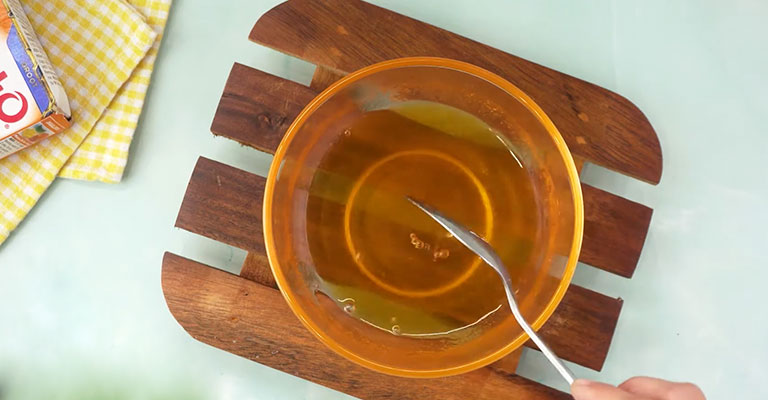
The use of acidic fruits or additives can have a significant impact on the setting of Jello. Acidic ingredients can affect Jello’s ability to set due to their interaction with gelatin, the primary setting agent in Jello.
Here are the effects of acidic fruits or additives on the Jello setting:
Delay in Setting Time
Acidic ingredients, such as citrus fruits (oranges, lemons, limes) and their juices, can slow down the setting process of Jello. This is because the acid interferes with the gelatin’s ability to form a stable network.
As a result, Jello made with acidic ingredients may take longer to set, and in some cases, it may not set as firmly as Jello made with less acidic or neutral ingredients.
Reduced Gel Strength
The acidic nature of fruits and additives can weaken the gelatin’s ability to create a strong gel structure.
This can result in a Jello that is less firm and more prone to breaking or not holding its shape as well. The gel may be softer and have a more delicate texture.
Enzymatic Activity
Some fruits, like pineapple and papaya, contain enzymes (bromelain and papain, respectively) that can break down the gelatin’s protein structure.
This enzymatic activity can prevent the Jello from setting properly and may result in a watery or runny texture. To counteract this, it is recommended to heat the fruit or juice to inactivate the enzymes before adding them to the gelatin mixture.
Flavor Enhancement
While acidic ingredients can pose challenges to the Jello setting, they can also bring a burst of fresh, tangy flavor. Citrus fruits, for example, add a zesty and refreshing taste that many people enjoy in gelatin desserts.
Textural Variations
When you’re looking to create a Jello dessert with a different texture, the use of acidic fruits or additives can be intentional.
Some recipes incorporate acidity to achieve a more delicate and less firm consistency, which can be desirable for certain culinary creations.
Common Mistakes and How to Avoid
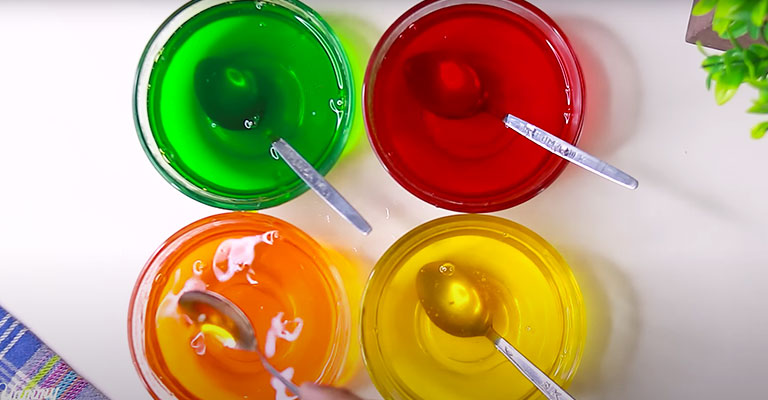
Setting Jello can be a delightful and fun culinary endeavor, but it’s not without its challenges. Achieving that perfect wobble and firm texture requires attention to detail.
Here are some common mistakes to be aware of, along with tips on how to avoid them:
Insufficient Gelatin
- Mistake: Using too little gelatin can result in a Jello that doesn’t set properly, leaving it too soft or runny.
- Avoidance: Follow the recipe’s instructions for the correct ratio of gelatin to liquid. Generally, one packet of gelatin can set about 2 cups of liquid.
Incorrect Temperature
- Mistake: Using water that is too hot or too cold can affect how the gelatin dissolves and ultimately sets.
- Avoidance: Use water that’s around 160°F (71°C) for optimal gelatin dissolution. Avoid extremes in temperature.
Not Dissolving Gelatin Completely
- Mistake: Inadequate stirring can result in uneven distribution of gelatin, causing some parts of the Jello to set while others remain liquid.
- Avoidance: Stir the gelatin mixture thoroughly to ensure complete dissolution in the hot liquid.
Too Much Liquid
- Mistake: Excessive liquid can dilute the gelatin, preventing it from setting properly.
- Avoidance: Stick to the recipe’s recommended measurements for liquid, and avoid adding extra unless the recipe specifically calls for it.
Adding Fresh Pineapple or Papaya
- Mistake: These fruits contain enzymes that can break down the gelatin’s structure, preventing proper setting.
- Avoidance: Consider cooking or blanching these fruits before adding them to inactivate the enzymes.
Quick Cooling
- Mistake: Rushing the cooling process can result in a Jello that hasn’t had sufficient time to solidify.
- Avoidance: Leave the Jello in the fridge for the recommended time, usually a few hours or overnight.
Using Fresh Pineapple Juice
- Mistake: Fresh pineapple juice contains enzymes that can interfere with the setting.
- Avoidance: Heat the juice to a boil for a few minutes to inactivate the enzymes before mixing with gelatin.
Mold Size
- Mistake: The size and depth of molds can affect the setting time.
- Avoidance: Choose molds based on the desired final presentation. Smaller, shallower molds will set faster.
Disturbed Setting Process
- Mistake: Jostling or moving the Jello while it’s setting can disrupt the gelatin network.
- Avoidance: Avoid any disturbances during the setting process. Allow the Jello to set undisturbed.
Expired Gelatin
- Mistake: Using expired gelatin can lead to unpredictable results, including Jello which doesn’t set properly.
- Avoidance: Always check the expiration date on your gelatin packets and use fresh, unexpired gelatin.
Alternatives to Gelatin for Vegetarians or Those With Dietary Restrictions
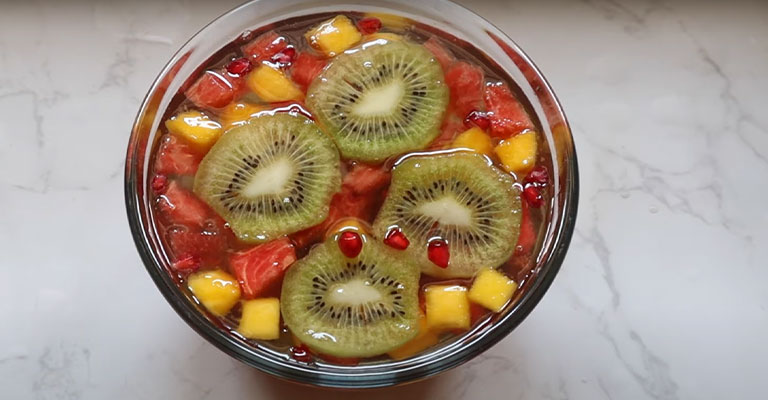
Gelatin, a common ingredient in many desserts and foods, is derived from animal collagen and is not suitable for vegetarians or those with dietary restrictions. Fortunately, there are several vegetarian and vegan alternatives to gelatin that can be used in various recipes.
Here are some popular alternatives:
Agar-Agar
Agar-agar is a plant-based gelatin substitute derived from seaweed. It works similarly to gelatin in terms of gelling properties and can be used as a 1:1 replacement.
It’s widely used in Asian cuisine and is suitable for both vegetarians and vegans.
Carrageenan
Carrageenan is another seaweed-derived thickening agent that can be used to gel and thicken foods and beverages. It comes in different forms, including kappa carrageenan for firm gels and iota carrageenan for softer gels.
Pectin
Pectin is a natural substance found in fruits, especially citrus fruits and apples. It is commonly used to make jams and jellies.
Pectin is an excellent alternative to gelatin for setting fruit-based desserts and can often be found in powder or liquid form.
Arrowroot Starch
Arrowroot starch is a gluten-free thickening agent made from the roots of the arrowroot plant. It’s suitable for use in sauces, puddings, and fruit fillings. Arrowroot starch provides a glossy finish to desserts.
Tapioca Starch
Tapioca starch or tapioca flour is derived from the cassava root and is often used as a thickening agent in puddings and pie fillings. It is also gluten-free.
Xanthan Gum
Xanthan gum is a plant-based thickening agent and stabilizer. It is commonly used in gluten-free baking and can be used to add viscosity to soups, sauces, and desserts.
Guar Gum
Guar gum is another plant-based thickening agent that can be used to thicken and stabilize foods. It’s often used in gluten-free recipes and ice creams.
Cornstarch
Cornstarch is a widely available thickening agent made from corn. It’s suitable for use in pies, puddings, and sauces.
Cornstarch is not recommended for recipes that require a gel-like consistency, but it’s excellent for thickening and stabilizing.
Homemade Fruit Puree or Fruit Juice
In many fruit-based recipes, you can use homemade fruit puree or fruit juice as a natural thickener and flavor enhancer. This is a particularly good option for recipes like fruit gels and jams.
Vegan Gelatin Products
There are several commercially available vegan gelatin products, such as agar-agar powder, that are designed as direct substitutes for animal-derived gelatin. These products can be used in the same way as traditional gelatin.
Quick Tips for Ensuring Jello Sets Properly
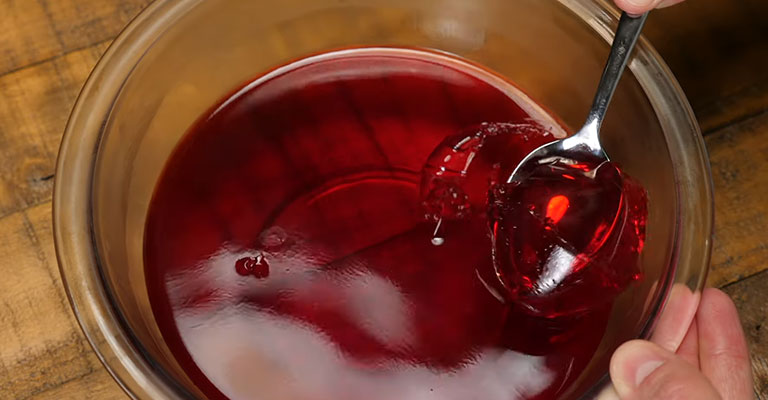
Setting Jello just right can be a rewarding kitchen endeavor. However, it requires attention to detail.
These quick tips will help you achieve that perfect wobble and firm texture every time:
Measure Gelatin Accurately
Ensure you use the correct amount of gelatin for the recipe. Generally, one packet of gelatin sets about 2 cups of liquid. Follow the recipe’s instructions for the best results.
Optimal Water Temperature
Dissolve gelatin in hot water (around 160°F or 71°C). Too hot or too cold water can affect how the gelatin sets. Be precise with the temperature.
Stir Thoroughly
Take your time when stirring. Ensure the gelatin is completely dissolved in the hot liquid to avoid lumps or uneven texture in the Jello.
Mind the Liquid Ratio
Stick to the recommended measurements for liquid. Too much liquid can dilute the gelatin, preventing it from setting properly.
Handling Acidic Fruits
When using acidic fruits like pineapple, papaya, or their juices, consider pre-cooking or blanching them to inactivate enzymes that can interfere with setting.
Give it Time to Set
Allow Jello to cool and set in the refrigerator for the recommended duration. Rushing this process can lead to under-set Jello.
Be Mindful of Mold Size
Choose molds based on the desired presentation. Smaller, shallower molds set faster than larger, deeper ones.
Avoid Disturbances
Resist the urge to move or jostle the Jello while it’s setting. Even minor disturbances can disrupt the gelatin network.
Check Gelatin Expiry Date
Ensure your gelatin is fresh and within its expiry date. Using expired gelatin can lead to unpredictable results.
FAQs
What can cause my Jello to remain liquid?
Possible reasons could include insufficient gelatin, incorrect water temperature, or the use of too much liquid.
Can using acidic fruits affect Jello’s setting process?
Yes, acidic fruits like pineapple or papaya contain enzymes that can interfere with gelatin setting. Pre-cooking or blanching the fruits can help.
Is it possible to salvage Jello which hasn’t set properly?
Yes, you can reheat and dissolve the unset Jello mixture, then add more gelatin and let it rest in the refrigerator.
Do expired gelatin packets affect Jello’s ability to set?
Yes, using expired gelatin can lead to unpredictable results, including Jello which doesn’t set as expected.
What’s the recommended water temperature for dissolving gelatin?
The ideal temperature for dissolving gelatin is around 160°F (71°C). This ensures proper dissolution and setting.
To Recap
The art of achieving perfectly set Jello lies in meticulous attention to key factors. Common missteps, such as inadequate gelatin, incorrect water temperature, and the use of acidic fruits, can hinder the setting process.
Patience in allowing Jello to cool undisturbed, adhering to precise measurements, and ensuring the freshness of gelatin packets are paramount.
By understanding and addressing these challenges, you can consistently create delectable, jiggly desserts that captivate both the eye and the palate.
With these insights and strategies, the next time you embark on your Jello-making adventure, you can anticipate successful results and relish the joy of perfectly set gelatin delights.


